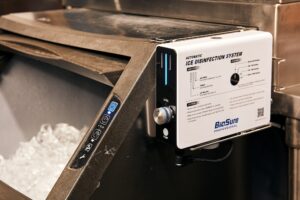In the United States, seniors are the fastest-growing segment of the population. This is creating a soaring demand for nursing homes. There are currently more than 15,000 nursing homes and long-term care facilities in the US, housing one million elderly residents. That’s almost three times the number of patients than those residing in hospitals. Each one of these facilities has a responsibility to keep its residents safe and healthy, starting with providing clean and sanitized towels, bedding, and clothes.

Unfortunately, COVID-19 has wreaked havoc in nursing homes around the US and caused thousands of deaths. In July and August 2020, more than 16,800 nursing home residents and workers died from COVID-19 — with, on average, more than one nursing home resident infected each minute and 11 residents dying per hour. Could this have been prevented with better hygiene and sanitation in nursing homes?
The Importance of Hygiene for Nursing Homes
Clean laundry in the nursing home is a monumental job that includes both cleaning and disinfection of bedding and towels in each room, to washing residents’ clothing and employee uniforms.
Nursing homes have to balance cost-effectiveness and impact on the environment with the cleanliness and quality of linen for their residents. They often look to commercial laundry solutions to handle this challenging task. However, these cleaning businesses face financial and regulatory pressures as they increase the capacity to meet the demand. Commercial laundry services face challenges in working with nursing homes. They include the mounting costs of heavy water and heat energy consumption, waste and chemical management, efficiency per laundry load, and fabric lifetime cost.
And these pale in comparison to the challenge of keeping linens free of deadly viruses such as COVID-19. According to the International Scientific Forum on Home Hygiene (IFH) 2011 study on the role of laundry in everyday life, soiled linens and clothing were shown to carry pathogens and bacteria that can be linked to numerous diseases, with linen being a vehicle that carries and passes along microorganisms that cause infectious diseases. As the elderly population is the most susceptible group to these diseases, sanitized laundry is the first line of defense against bacteria and viruses including COVID-19. Ozone laundry is the first line of defense for keeping nursing home residents safe.
Ozone for Laundry Can Save Lives
Ozonated water when used in laundry disinfects clothing and greatly reduces the risk of spreading infectious microorganisms that are found on dirty and soiled clothing. Using ozone to sanitize fabric-based cleaning materials lowers the survival rate of pathogens on cleaning supplies. It also kills dangerous microorganisms and helps eliminate mildew in washing machines.
Ozone is created when water is electrolytically infused into the water. It does not leave any chemical residue in the washing water, making it safer for the environment compared to chemical disinfectants like chlorine. BES ozone systems, including the bestselling Waterline Disinfection System (WDS) — a device that can easily attach to laundry water lines and produce consistent ozone flow for each load and every wash. Ozonated water also reduces the amount of laundry detergent used in each wash load, requiring fewer rinse cycles, thus saving water.

Nursing home employees are tasked with providing a safe and clean living space for residents. Mildew and its odor are a result of bacteria found in laundry machines due to humidity and residual water in the washing machine. Ozone can be used to remove this mildew by sanitizing washing machines. Ozone can eliminate mildew and its associated odor and deodorizes the machines for fresher smelling laundry.
Copyright besgroups.com All Rights Reserved
Related Articles
BES Group’s Electrolytic Ozone for Laundry
Chlorine Solution vs Ozonated Water: The Debate in Professional Sanitation
What is Ozone Water?



